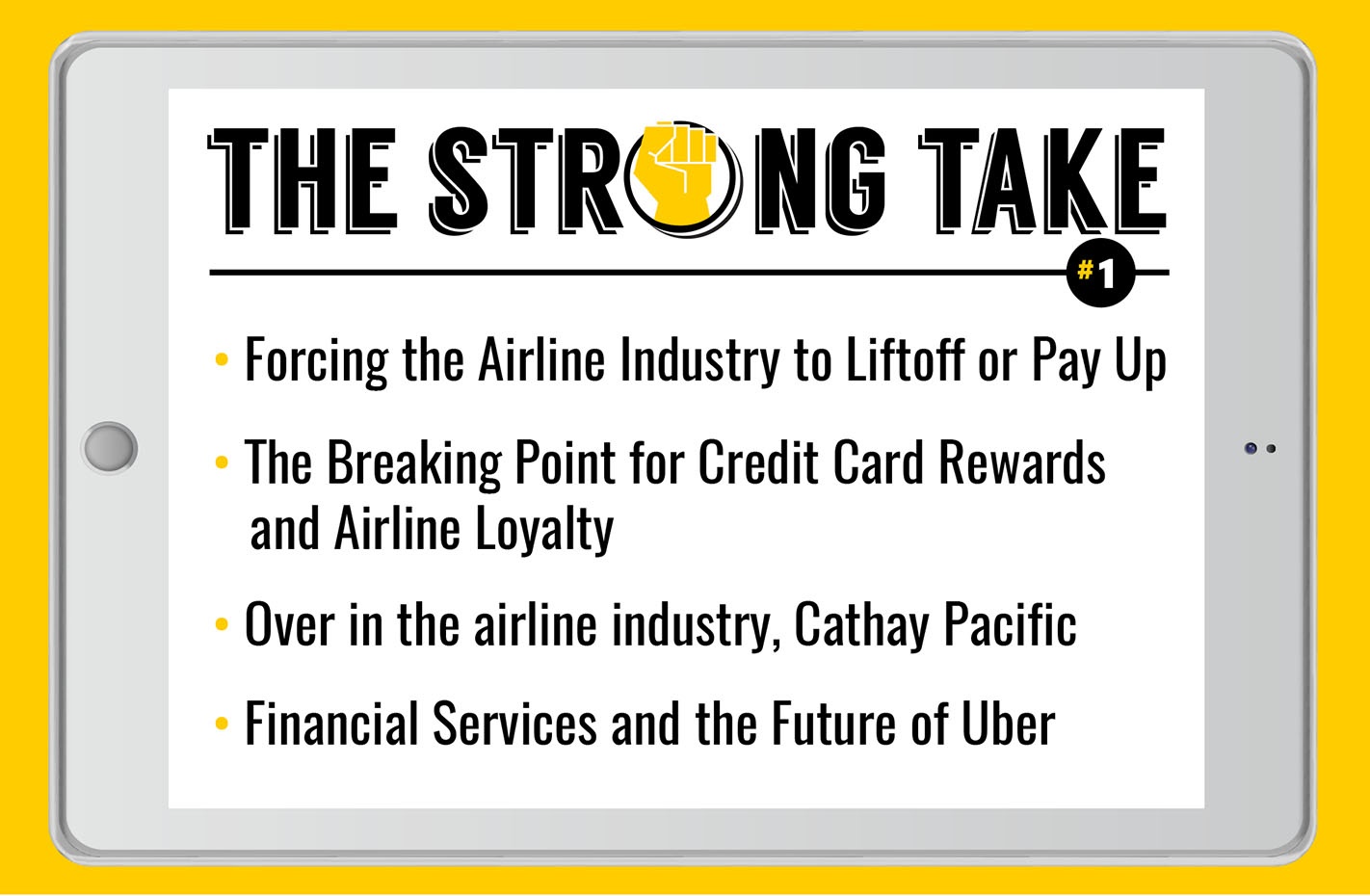The Strong Take by ThinkInk: B2B & Tech, the Newest News That Matters
Aug 04, 2017 / By Content Editor
We live in interesting times.
So much of the narrative today is about innovation and disruption, huge shifts that are re-defining business, marketing and plain old life – from ridesharing and mobile wallets to big data and artificial intelligence.
These are really happening, however, nothing happens overnight.
Every innovation and disruption takes painstaking effort, trial and error, and ultimately, hard decisions on what to do next. Before we get ahead of ourselves, let’s appreciate what’s going on in the here and now as companies like Uber, Lyft, The New York Times, Cathay Pacific, Citibank, Chase and many others are making tough business decisions that will decide tomorrow’s news, content, products, services, winners and losers.
As ThinkInk is in the storytelling business, we’re constantly examining the changes taking place across our clients’ industries as well as our own - and asking why it matters to us. All of us.
This week, The New York Times was reviewed in “Monday Note” with a hard look at a dying print news industry – the company’s print ad revenue and daily circulation (even Sunday circulation) were all down in Q2 (y/y), while digital-only product revenue was way up (+46%). The Monday Note called for two bold moves – first, at least start winding down print operations (The NYT has more than twenty printing plants), and second, increase investment in non-US digital subscribers (possibly taking the Facebook approach which discounts foreign revenue in order to grow more users).
When confronted with a broken industry – like print news or brick-and-mortar retail or, dare we say it, the airline sector – everyone has “ideas” for change. But will companies like The New York Times change on their own or be forced to change? And what will be the tipping point?
Forcing the Airline Industry to Liftoff or Pay Up
We often think of change in terms of massive disruptions – but there are a lot of smaller sized companies creating change by fixing a specific problem. And if they don’t create massive change, at least they keep the market honest. AirHelp is one of those startups with a simple value proposition – an app that notifies airline passengers of cancellations and delays, as well as their rights as disrupted passengers – including monetary compensation.
This may seem like “ambulance chasing” – trying to make a quick buck from the airlines – but really, airlines have little incentive to treat every passenger fairly. Most customers don’t know their rights, and the airlines’ only incentive to treat passengers fairly is whether or not the airline will take a hit in revenue or brand image. If a passenger isn’t a high-value loyalty program member or social media influencer, what incentive does the airline have to go out of its way to satisfy that customer? AirHelp is the perfect example of mobile technology empowering the common consumer and forcing big businesses to treat all customers with basic courtesy – which can turn into revenue and loyalty down the road, if the airlines do it consistently.
B2B News: The Breaking Point for Credit Card Rewards and Airline Loyalty
At the other end of the spectrum, when a company does have real incentives to “wow” a customer, they go all out – and in the case of credit card rewards, maybe they go too far out. This piece from PaymentsSource looks at major credit cards like Chase Sapphire Reserve, Citi Prestige, American Express Platinum and U.S. Bank Altitude, all of which try to balance big up-front bonuses with hefty annual fees in order to attract affluent customers. The credit card companies are some of the smartest and most sophisticated strategists in marketing, but even they have had to re-think their rewards structures. Is it sustainable, for example, to shell out 100,000 bonus points valued at $1,000 just for signing up for Chase Sapphire Reserve? Apparently not – Chase later reduced it to 50,000 bonus points.
Over in the airline industry, Cathay Pacific re-structured its popular Marco Polo loyalty program last year, telling customers in a video that “it’s time for a change.”
Travel blogger Lucky had all the details when it happened. What caught our attention today was a study published by Travel Data Daily that used Big Data intelligence to analyze Cathay Pacific customers on social media. The study was able – with incredible accuracy – to determine a social user’s loyalty status and predict loyalty program churn based on when a Cathay Pacific customer started talking about another airline in a positive manner or asking questions related to another airline. Usually, an airline only discovers a problem once a loyalty program member has stopped engaging. This study by Travel Data Daily shows how machine learning algorithms can alert an airline before a customer has defected, allowing the airline to be more proactive in keeping loyal customers.
The future of machine learning and artificial intelligence (AI) is unbelievably bright. Adweek pulled together some recent marketing technology stats – IBM reported that 73 percent of CEOs predict AI will play a “key role” in their companies’ future. It’s not hard to see why, when Travel Data Daily is already able to put AI to such practical use for bottom-line business purposes.
B2B News: Financial Services and the Future of Uber
Finally, in what may be our favorite story of the week (stay tuned for a separate blog), Uber is joining the payments market, partnering with Barclays on a co-branded credit card. In less than a decade, Uber has completely upended a traditional business model and is only just beginning to test what else it can achieve beyond ridesharing. Does Uber have the marketing potential of, say, Facebook? And more immediately, how will this latest partnership with Barclays impact the financial services sector?
We’ll be devoting more space on our blog to financial services in the coming months – including fintech and B2B/P2P payments – with the goal of helping our clients understand why it matters to their industries.
Stick around and get The Strong Take by ThinkInk every week, and here are a few more posts you might like:
Fighting Airline Loyalty Fraud: The Constantly Moving Target
Sign up for our insights on the convergence of business and PR





